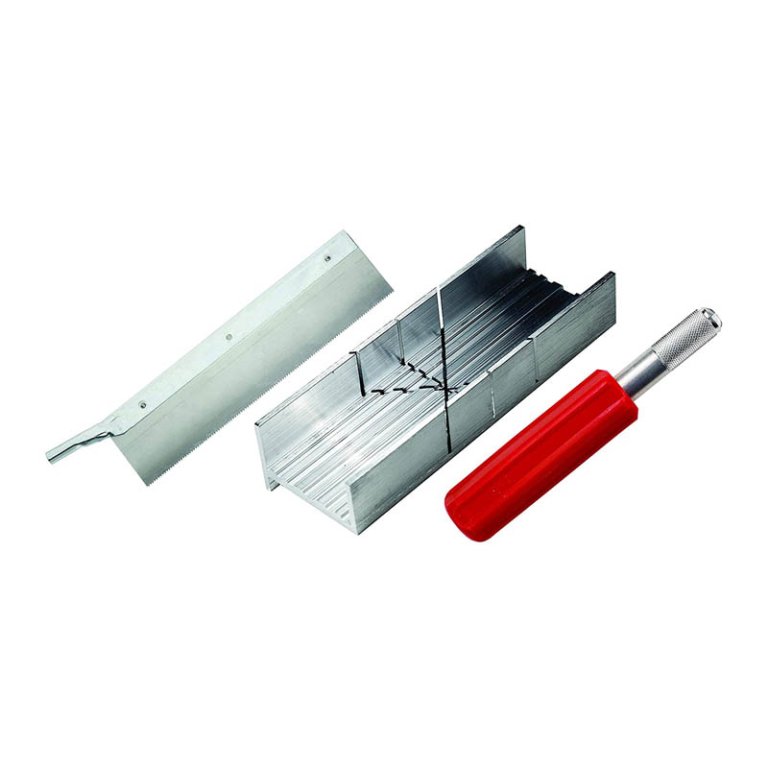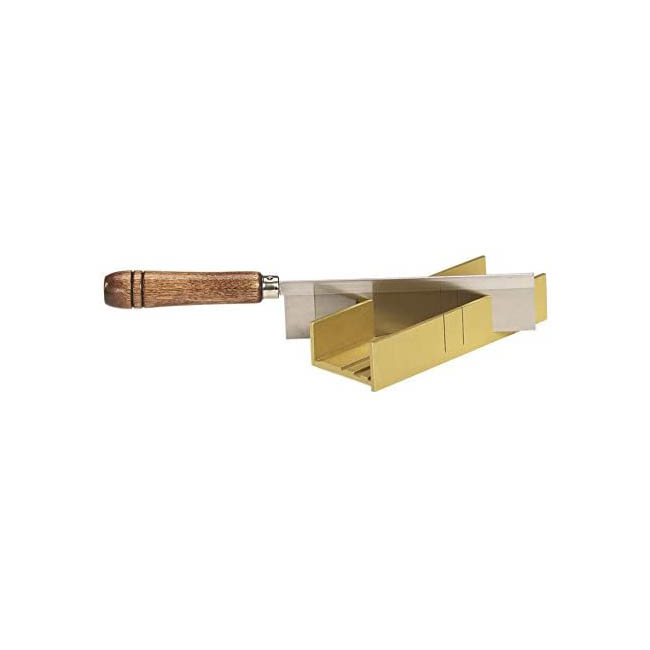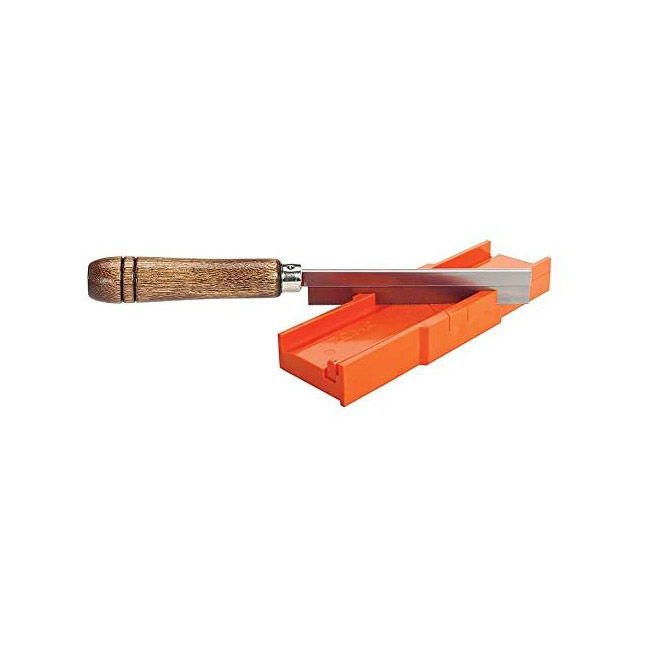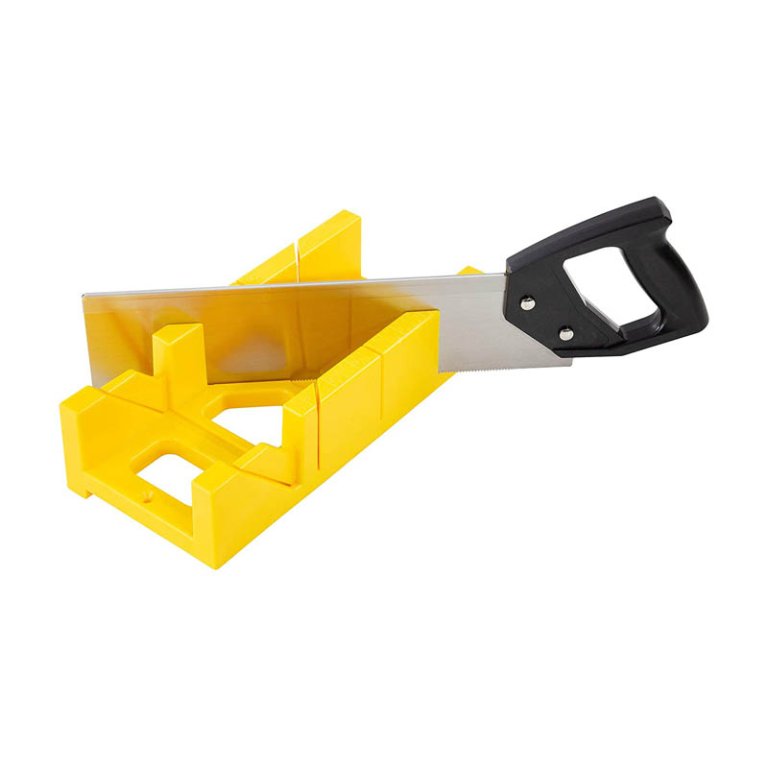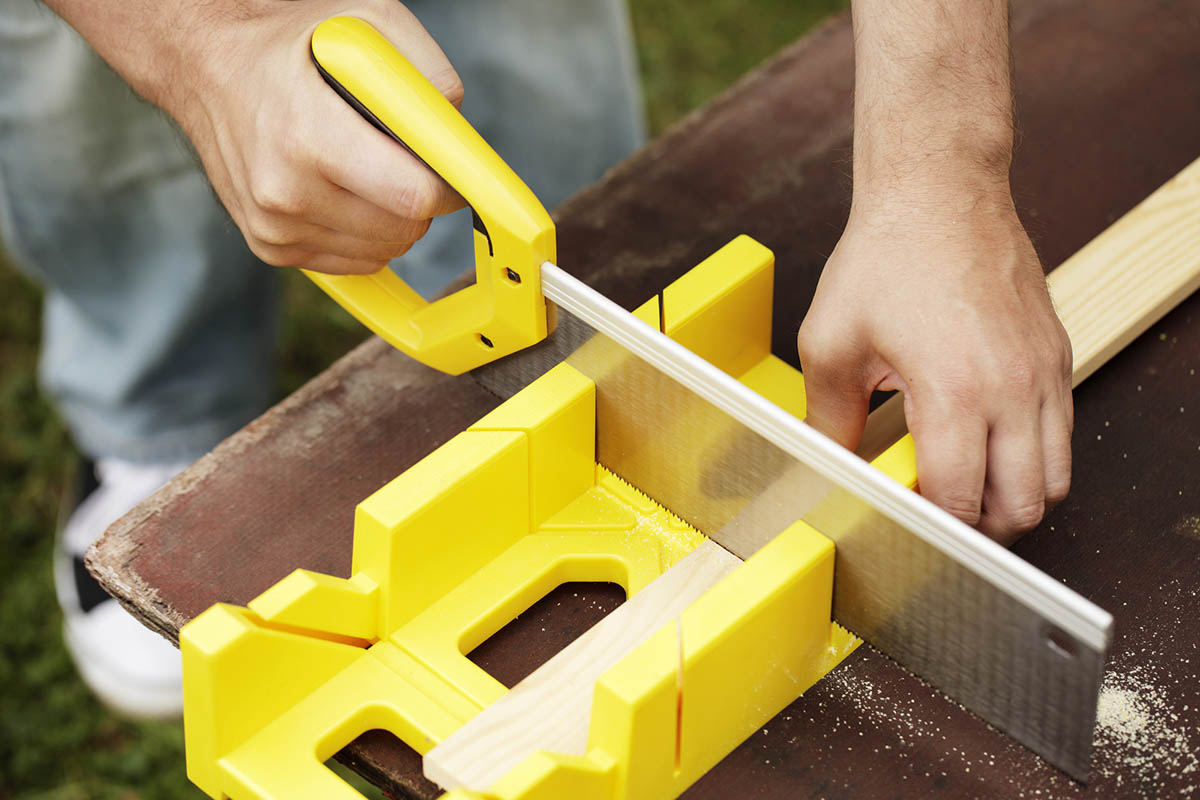
We may earn revenue from the products available on this page and participate in affiliate programs. Learn More ›
Those who prefer making quick cuts with a power saw might overlook miter boxes, but these tools still hold a place in the hearts of woodworking purists who craft trim molding and other projects by hand. The small size of a miter box gives it a distinct advantage over a bulky power miter saw when workbench space is at a premium. The box holds boards securely while a manual backsaw—so named because it features a sturdy spine—cuts the material at preset angles (often just 45 degrees and 90 degrees, although some miter boxes offer additional angles).
When choosing a miter box set, look for a quality backsaw, a durable box, and precise angle-cutting guides. Ahead, get the details on our top-favorite picks!
Our Top Picks
Best Overall
Excel Blades Miter Box Set
For a hand with cutting 45-degree and 90-degree angles on boards, you’ll love the 9.5-inch-by-11.5-inch Excel Blades Miter Box Kit. Excel manufactured the box using high-quality aluminum for durability, and the versatile backsaw comes with a 5-inch long steel blade that boasts 42 sharp teeth per inch. The backsaw handle is crafted from durable molded polystyrene and it features a chuck attachment (similar to a drill), so you can detach the blade when it dulls and install a new blade in the handle. The Excel Blades miter box set is a great choice for both hobbyists and dedicated woodworkers.
Also Consider
Olson Miter Box Set
With the ZONA Olson Saw, you can make meticulous cuts angled at 45, 60, and 90 degrees on material up to a seven-eighths inch thick. The slots in the box are only .014-inch wide, just wide enough to accommodate the thin carbon steel saw blade that features 42 tiny teeth per inch, so the angled cuts are clean and precise. The box measures 11 inches long and 4 inches wide, and the handle on the 13-inch saw blade is a polished wood for comfort. This miter box set is perfect for projects that require precise miters on thin material, such as custom-crafted dollhouses or birdhouses.
Best Mini Miter Box
Zona Mini Miter Box Set
Cutting angles on thin boards and dowels is a snap with the ZONA Ultra Thin Saw. Designed to cut material up to one-fourth inch thick, this small miter box is perfect for DIYers who need to cut strips of wood veneer or balsa. Measuring just 4 inches wide and 13 inches long, the Zona miter box can make clean 45-degree and 90-degree angle cuts. The backsaw features 32 razor-sharp teeth per inch, and it comes with a smooth-touch wood handle that’s comfortable to hold. The miter box features a beveled channel that holds dowels and an adjustable stop that secures wider pieces of material firmly against the side of the box when cutting.
Best Value
GreatNeck Miter Box Set
Cut precise mitered corners without spending a fortune on a saw. The GreatNeck Mitre Box with Back Saw features a 12-inch long, 4-inch wide box manufactured from high-impact polystyrene. The set comes with a 14-inch, reinforced, carbon-steel backsaw with an open-grip handle. The saw features 12 teeth per inch, and in addition to making 45-degree and 90-degree angled cuts, the user can cut a 45-degree bevel using the bevel guide on the end of the box.



